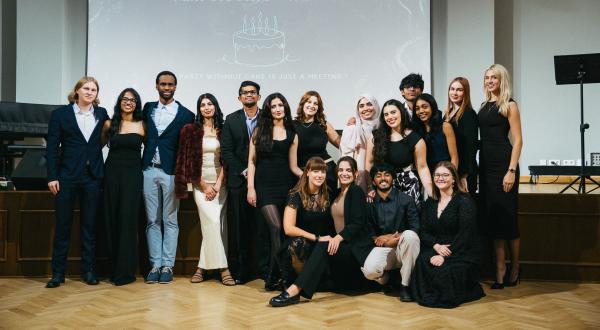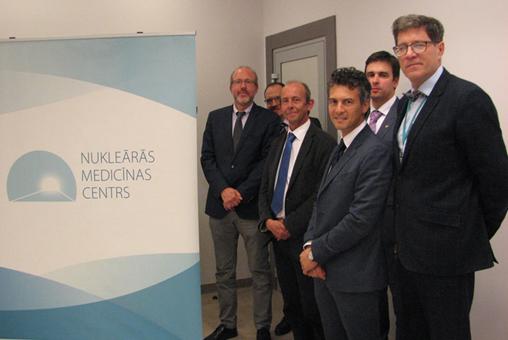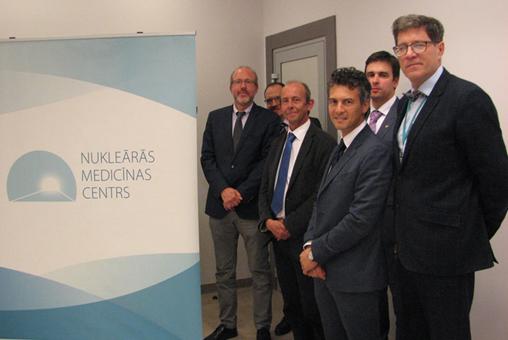CERN Science Week activities at RSU
The European Nuclear Research Centre (CERN) offered versatile activities and guest lectures within the framework of CERN Science Week 22–26 May. Associate Professor Jevgeņijs Proskurins and lecturer Didzis Lauva from RSU Faculty of Medicine, Department of Physics, together with colleagues from Rīga Technical University were involved in the organisation of the event. RSU hosted a guest lecture on the application of modern physics in diagnostics and treatment, “From physics to medical applications”, by leading scientist and Senior Advisor for Medical Applications at CERN, Manjit Dosanjh. RSU also organised a visit of CERN representatives, including Head of Beams Department at CERN Paul Collier, to the Centre of Nuclear Medicine.
The guest lecture given by Manjit Dosanjh (CERN) on the application of physics in medicine was attended by over 50 listeners – RSU teaching staff, students, medical practitioners, scientific researchers and representatives of state institutions and dealt with diverse topical issues on hadron therapy, particle accelerators, radioisotope generators, radiodiagnostics, radiation therapy for cancer etc.
Physics has been and remains an important tool for development of biomedical technologies, particularly concerning application of ionizing radiation in treatment and diagnostics. The constant challenge of improving spatial and temporal resolution has resulted in a high demand for the combined application of particle detectors and imaging tools in medicine.
Particle accelerators have found regular application in radiotherapy for malignant skin diseases and are applied for producing radioisotopes. They are used for cancer diagnosis and treatment. The main task of radiotherapy is to effectively expose the tumour area to a radiation dose without affecting the neighbouring tissues. Current treatment methods are characterised by exponential attenuation, maximum energy close to the emitter and a high absorbed radiation dose behind the exposed tumour.
Hadron (particle) therapy, on its turn, ensures the application of a maximum dose to the tumour area with minimum damage to the surrounding healthy tissues, resulting in more effective and safe treatment.
During the visit the head of the Centre of Nuclear Medicine Vitālijs Skrīvelis gave a presentation on the history of the centre, cyclotron complex, completed and planned projects. The parties also discussed possible cooperation with CERN researchers.
Related news
 13th anniversary of RSU’s International Student Association celebrates accomplishments and communityFor Students, News
13th anniversary of RSU’s International Student Association celebrates accomplishments and communityFor Students, News




